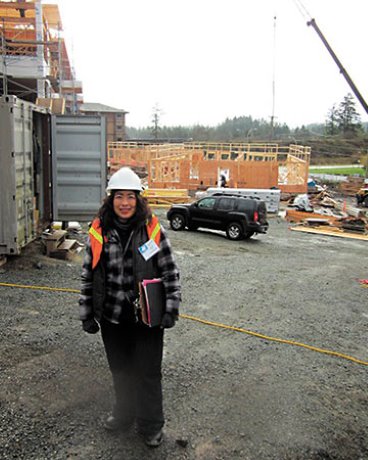It’s one thing to help immigrant construction workers to understand the terminology required to master the technical aspects of their job. It’s quite another to help them learn the type of English they need to fit in with the construction culture and to advance in their careers.
It’s one thing to help immigrant construction workers to understand the terminology required to master the technical aspects of their job. It’s quite another to help them learn the type of English they need to fit in with the construction culture and to advance in their careers.
A pilot program called English for Construction Trades aims to do just that. The program, which debuted this month, was developed jointly by Vancouver’s MOSAIC — an agency focusing on immigrant employment issues — and Victoria’s Camosun College .
“We’d performed a literature review and although we found several programs aimed at teaching English to construction workers in various trades, we saw nothing that prepared workers for whom English is a second language to advance in their trade,” says Patricia Fahrni, a curriculum researcher/writer with the program.
“This course focuses on practical, Canadian-style English that workers in construction need to get ahead, to talk with supervisors, to work with crews, to get along with co-workers, to participate in meetings, to ask questions and to present ideas without rocking the boat.”
Program developers used a technique called Job Activity Language Analysis to determine the unique content and structure of construction site English.
“Language is all patterns,” says Fahrni. “When we say we are happy about something, we use patterns that are familiar to us, but they may be culturally based — it wouldn’t be intuitive to someone who was learning English. It’s also difficult for new Canadians to know when to interject, or when it’s appropriate to present an idea or a question to a supervisor.”
Job sites studied included a ship building site in Victoria, a civic building site in Vancouver where concrete panels were being formed, a torch-on flat roofing project at a Vancouver shopping mall, and a residential condominium construction site in Saanich.
Construction companies assisted in the research not only by providing valuable information and advice, but also by providing workers who volunteered to go to work “wired” so their day-to-day conversations could be recorded.
“Their inhibitions lasted only about 20 minutes or so, before they slipped into unguarded mode and we started to collect ‘authentic’ job site language, and the structural patterns of their conversations,” says Fahrni.
“The language researcher would go in and shadow the employee with the microphone, or talk to site supervisors and safety officers.”
The typical target audience for the program is a construction worker who knows basic English and who may have been working in a construction or related trade in another country, or who is already working here and wants to advance in the field. Seasoned language instructors and guest speakers from the construction industry will teach the classes.
Among the curriculum material to be presented are issues of the Journal of Commerce, the sister publication of Daily Commercial News.
“The newspaper has a lot of good construction information, and lots of management-related information and it features the authentic language of the construction business sector,” says Fahrni.
The first class of approximately 20 participants began the program in mid-October. They represent a broad range of countries of origin, including the Philippines, mainland China, Iran, Mexico, Afghanistan and Poland. Their levels of industry experience range from those who were construction workers in their own country to professionals who see the construction field as the best way to integrate into Canadian society.
The program lasts an intensive four months, with participants committing to classes for three hours on Tuesday and Thursday evenings and six hours on Saturday.
“They have to be committed to participate in the program,” says Fahrni.
“They’re going to be awfully tired after a hard day’s work.”
The pilot phase of the program was funded by the British Columbia Ministry of Regional Economic and Skills Development. It will run until March 2013.



Recent Comments
comments for this post are closed